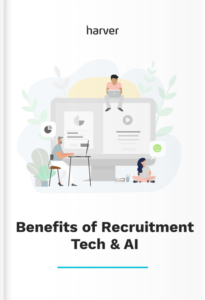If your team’s performance is subpar and it’s affecting both your business metrics and your customers’ satisfaction, it may be time for a skill gap analysis.
This underused tool is one of the most effective ways to identify the skills that your team is missing as well as the employees who require upskilling and reskilling to help your organization keep up with the market changes.
How do you perform a skill gap analysis, and where do you start exactly?
What’s in?
What is a skill gap analysis?
Skill gap analysis is a tool you can use to determine what gaps exist between employees’ current skills and those skills required by your organization to reach its goals. This helps you establish what training or hiring requirements are needed to fill those areas where skill gaps are apparent.

70%
of employers who are actively hiring report a skills shortage.
Source: Challenger Hiring Survey
43% of employers say that although they have enough applicants, those do not have the skills needed. Skills gap is notable not only within organizations, but also on the job market.
How do you analyze skill gaps?
1. Plan your analysis
A skill gap analysis should be done on two levels – at an individual and at a team level. To plan your analysis effectively you need to establish who you will need to talk to, including C-suite, team leads & staff-level employees.
Who exactly do you need to talk to to find out about the skills that different departments are missing? Team leads can help you with uncovering the skills gaps of the individual employees in their respective department.
2. Define your organization’s future goals
Where do you want your organization to be in a year? In 5 years? You need to ask yourself a few questions to be able to know where you’re headed, in order to figure out what skills you will need from employees to get there.
Potential questions to ask:
- Where is the organization going?
- Is there anything on the horizon for the next 12 months?
- Given our current workforce, how can we develop the necessary strategies to get us where we want to go?
- What skills sets do we require from our employees?
- What areas of the business are we lacking knowledge or resources in?
- What jobs need to be filled in order to allow the organization to get to where it needs to go?
- What skill sets will these employees need to possess in the future?

28%
of employers expect to expand their current workforce due to automation by 2022.
Source: World Economic Forum
New technologies will require more employees to work with them. Organizations need to anticipate these changes to prepare for the future.
3. Catch up on the future of work trends
As well as determining what you need to do right now in order to get your organization to where it needs to go, you also need to consider the future of work trends. For example (if applicable to your organization), you will need to know:
- Which jobs have the potential to become automated?
- What skills needs are currently on the rise?
- Which currently not yet existing positions will your company need?
To find the answers to these questions, you can utilize resources such as 100 Jobs of the future or The Future of Jobs Report 2018 to assist you. Rapid technological breakthroughs continue to move the frontier which lies between jobs that need to be done by humans, and jobs that can be carried out by algorithms and machines.
How AI & recruitment technology is changing recruiting experience
Find out how tech has helped other companies grow by enhancing both the recruiters’ and candidates’ experience!
4. Determine key skills needed for the future
Every organization, in order to remain competitive, has to adopt new technologies and embrace new practices to achieve growth. But the speed with which organizations are being bombarded with new developments makes it incredibly difficult for companies to constantly find employees with specific skill sets to use these technologies.
In order to mitigate against being reactive every time a new skills gap opens up or is identified in your workforce, use skills gap analysis to determine where the gaps in skills are, and based on your future goals and where your industry is going, establish what skills you are going to need to achieve your business goals.

67%
of employers across industries consider skills gaps and local labor market the biggest barriers to adoption of new technologies.
Source: World Economic Forum
5. Measure the current skills
What is your company’s current skills inventory? You can find out the answers to these questions in multiple ways:
- Examine individual employee’s key performance indicators (KPIs) will allow you to determine how each employee contributes to the business.
- Conduct skills assessments, surveys and/or interviews with employees.
- Establish a 360-degree feedback process whereby you determine the current skill set of your employees by soliciting feedback from everyone who comes into contact with the employee – peers, line managers, etc, as well as having the employee themselves tell you where they see their skills gaps. You can also check out individual and team performance reviews to see where employees and teams are lacking certain skills.
HR technology can help you with gathering and analyzing feedback from and about your employees. Popular employee feedback tools include:
- 15Five – the premise here is that employees take a 15-minute custom survey written by their employers. Employers then take five minutes to review it.
- Officevibe – identifies areas through weekly surveys where employees are dissatisfied AND where opportunities exist to increase team productivity.
- Culture Amp – this tool enables employers to run performance reviews, allowing managers to see the performance of employees throughout their entire lifecycle, from potential candidate through to exit from the company.
When talking skills management, you also don’t have to worry about keeping spreadsheets with your employees’ data. You can use skills management software to get a thorough understanding of where your workforce stands in terms of skills.
- Avilar – not only can this skills management software train employees, but it can be used to understand the skills requirements of your entire workforce and carry out skills management assessments to show where your employees currently lack skills.
- HRSG – this software gives users access to 300+ competencies including soft and hard skills. You can also create competency-based interviews for use during hiring and onboarding of new employees.
- Kahuna – this skills management system enables users to track employee performance and plan for future workforce requirements.

89%
of best-in-class organizations have core competencies defined for all roles.
Source: Deloitte
6. Find out where the gaps are
By conducting skills gap analysis you will know what gaps you have now and how that differs from where you want your organization to be in the future. Identify the specific challenges your company is (or will be) facing in terms of workforce skills.
So where could the gaps be? For example:
- 70% of retail employers are having trouble finding in-store candidates with the appropriate technical experience, so there’s a clear skills gap.
- Manufacturing industries are predicting more than 2 million manufacturing jobs go unfilled in the US over the next decade, due to a shortage of strong STEM skills in both current and new employees. That deficit is looking to increase to 7.9 million people by 2030, with a resulting loss of revenue as high as $607.1 billion.
- Within the next 3 years, the financial and business services sector is expected to have a talent deficit of almost 3 million workers due to a rapid rise in, and adoption of, disruptive technologies. The deficit will be a result of a lack of qualified candidates capable of using said disruptive technologies. By 2030 that skills gap will result in a deficit of 10.7 million employees, equating to $1.3 trillion of lost revenue.
- 54% of companies are already suffering from a digital skills gap.
7. Put your findings into action
Once you discover your skills gaps, you can start planning how to fill them. You can do this through a combination of training or hiring.
Reskill and upskill your existing employees (54% of employees will require this by 2022) to allow you to maximize the skills in the employees you currently have.

82%
of organizations are increasing investments in reskilling their workforce.
Source: Deloitte
Doing this will help close the gaps between their current skill level and your desired skill level. You will benefit by not only developing their existing skills but by training them for your future business needs they are more likely to stick with you because you are investing in their career development.
- You can provide this training yourself or you can draw on the expertise of professional training firms to carry out workshops, conduct training sessions or hold seminars for your employees.
- As well as training employees in order to close the skills gap, you could also invest in subscriptions to industry publications, to keep employees abreast of new and emerging technologies.
- You could run employee mentorship programs to aid transfer of skills and knowledge.
- Have employees attend industry-specific events or conferences to gain new, much needed skills.
- Develop apprenticeship and internship programs to fill your talent pipeline.
- Put in place skills assessments to use in your recruitment process.
- Hire contingent workers. If your skills gap is too wide, consider hiring in new knowledge to bridge the gap. Adapt your hiring process to take into account the potential skills gap that you will encounter in the future. Hire prospectively and screen candidates for the skills that you might require, anticipating those gaps.
Stop guessing,
Start data-driven hiring.
Learn how you implement a modern candidate selection process, that is: streamlined, experience-driven and backed by data.

Why should you conduct a skills gap analysis?
Conducting an effective skills gap analysis will help your company move forward, as you will gain invaluable insights into your workforce.
The benefits include:
1. Helps with strategic workforce planning
Because in a work environment that is constantly evolving, you need to think about who you’re hiring and training, when, and how they can help you achieve your company’s objectives.
2. Get an overview of the entire organization
From the top down you can take into account every department and determine which team or department doesn’t have the necessary resources to meet the organization’s objectives.
It will also allow you to delve even deeper into your company’s make up and look at specific individuals in each of these teams or departments, as well as determine what skills each team and individual requires training in, or where new hires need to be brought in to fill gaps.
3. Optimize your long-term recruitment strategy
You don’t want to hire reactively every time a new need arises. You want to foresee where the skills gaps are going to be and when these gaps are likely to arise. And as such, you want to put into place a long-term recruitment strategy to ensure these gaps are always filled.
4. Increase productivity
By providing your existing employees with the requisite training they require in order to plug the gaps in their particular skill sets will make them infinitely more productive.
Plus, by providing career development training to fill their skills gaps now, as well as providing training to fill their skills gaps that may arise in the future, you will benefit from content employees whose career development needs are being met.
5. Get ahead of your competition
Carrying out skills gap analysis will see you steam ahead of your competition by filling in those areas that you are weak in. Not only will it be able to help you hire smart, but it will also help you jump-start innovation and get ahead of the curve in your industry.

133
million new roles may emerge in the near future, while 75 million jobs may be displaced.
Source: World Economic Forum
Over to you
It is important to know what skills your company will need in the future to succeed. By 2022, emerging professions are going to comprise 27% of employment, while other jobs are set to decline. Conducting a skills gap analysis will help you prevent the unwanted surprise of having workers with insufficient skills on board.



